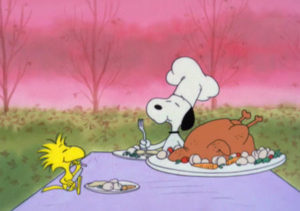Following a “related stories” link, I found a 2014 piece from Dana Milbank which combines my favorite pet peeve, the Generation Game, with everyone’s favorite fallacy, No True Scotsman. I’m a bit late to the party, but I can’t resist such a tempting target.
Milbank wants to make the case that, unlike the great conciliators of the past and the cool, detached Generation X of which he is a member, Baby Boomers are given to a “scorched earth” conflict-driven style of politics. There’s just one problem. Most of Milbank’s villains (Pelosi, McConnell, Reid) were born before the baby boom, while the hero of his piece, Obama, is, sad to say, a Boomer. No problem, says Milbank, “generational boundaries are inexact”. Applying the No True Boomer test, Pelosi, McConnell, Reid are turned into Boomers, while Obama is promoted into Generation X. In these cases, the shift is only a year or so, but a moment’s thought would have provided Milbank with plenty of examples of scorched-earthers born five years or more outside the Baby Boom (Roger Ailes and Rupert Murdoch at one end, Ted Cruz and Paul Ryan at the other) and compromisers born in the middle of the Boom (Tim Kaine and the leading members of the DLC)
More to the point, the style of politics he’s talking about got its start with the Nixon-Buchanan Southern strategy “tear the country in half, and take the bigger half“. The fact that many of its most prominent practitioners are (mostly male) Boomers follows from the fact that they are currently the right age (roughly 55 to 70 depending on details) to occupy senior leadership in US politics.
{ 9 comments }
Normally I steer clear of Black Friday sordidity, but I’ve been on an art kick here on CT; and, it happens, I need new colored pencils. And the best are Prismacolor. And – lo and behold! – the big box [aw man you missed the sale] is half-price for the next five hours. That’s a good deal if you want to box with shadows in a practical sense. (They aren’t all grey. Just ask Monet.)
After finishing Shadow Of A Mouse, I turned to the next title on the pile: E. H. Gombrich, The Depiction of Cast Shadows In Western Art [amazon].
It comes with its own mouse that comes with a shadow! [click to continue…]
{ 24 comments }
If you are like me, you have Abebooks ‘wants’ out there – hopeful lines dragging through the stream of books. Here’s one that nibbled, but it’s still too rich for my blood. It’s As nature shows them : moths and butterflies of the United States, east of the Rocky Mountains : with over 400 photographic illustrations in the text and many transfers of species from life, by Sherman F. Denton (1900). Only $400. (Anyone wants to buy it for me?)
It’s an amazing curiosity in the history of color printing. I would love to see it in person. But for now the Internet Archive will have to do. What makes it so remarkable, you ask?
From the Preface:
The color plates, or Nature Prints, used in the work, are direct transfers from the insects themselves: that is to say, the scales of the wings of the insects are transferred to the paper while the bodies are printed from engravings and afterward colored by hand. The making of such transfers is not original with me, but it took a good deal of experimenting to so perfect the process as to make the transfers, on account of their fidelity to detail and their durability, fit for use as illustrations in such a work. And what magnificent illustrations they are, embodying all the beauty and perfection of the specimens themselves!
As I have had to make over fifty thousand of these transfers for the entire edition, not being able to get any one to help me who would do the world as I desired it done, and as more than half the specimens from which they were made were collected by myself, I having made many trips to different parts of the country for their capture, some idea of the labor in connection with preparing the material for the publication may be obtained.
I’m sure someone can make use of this peculiar mode of auto-iconographic representation for some weird Wittgenstein philosophy of language example.
{ 8 comments }
I can’t remember how I came across Sharon (SJ) Bolton, but I do know that Sacrifice sat by my bedside a long time before I read it, possibly because it looked like it could genuinely be awful. Her output falls into main two groups: a series about Lacy Flint, a completely screwed up female cop in London (mainly) and several sort-of stand-alones. The first 3 stand-alones are mostly published under the name SJ Bolton, and the blurbs of those make a big deal of her fascination with, and use of, local folklore (which is maybe what kept making me delay reading Sacrifice). Accordingly the crimes have a mystical character – part of the trick is teasing you about whether the crimes have actually been committed by real people or whether there is some element of the supernatural. They are all in rural, closed, settings, and all involve strong female protagonists, and some element of romance. Now, they are not really sequenced, but they do all take place in the same fictional world, and a few characters recur, so you should read Sacrifice and Awakening
in whichever order you prefer, then Blood Harvest
(which is my favourite, despite a LOT of blood). They’re all genuinely creepy, and Awakening and Blood Harvest had me scared (be warned – Blood Harvest has a couple of scenes in which people might fall from great heights – and I’m the kind of person who breaks into a cold sweat when I see Road Runner go off the edge of a cliff).
The Lacey Flint books also take place in the same fictional world, and though they are not continuous with the others, again a couple of characters from the other books pop up, so if you really want to avoid (mild) spoilers, wait till after you’ve read the others. Flint is really a terrifyingly damaged person, for reasons that emerge slowly in relation to the plots. The books all (like Bolton’s others) have a ‘strong female protagonist in jeopardy’ element: partly due to Flint’s own extraordinary own recklessness and partly due to the irresponsible behavior of her bosses. All but one are set in London, which appears as a sort-of extra character (especially in A Dark and Twisted Tide). As with Tana French, they’re complex thrillers, and as with Sophie Hannah part of the joy is the author’s defying you not to suspend your disbelief. For what it’s worth, I love the non-Flints, and my daughter loves the Flints. Start at the beginning with Now You See Me
; if you start later, the first book will be ruined for you, but you’ll still want to read it in order to get a grip on Flint.
{ 2 comments }
When I’m writing a letter of recommendation for an undergraduate applying for graduate school (one of the many parts of my job for which I have received no training and my skill in which has never been assessed by anyone), I pretty much always want to look at the personal statement (or, their answers to the program-specific questions which many professionally-oriented programs ask). If I don’t know the student really well, the personal statement helps me write the letter, just because it keeps them fully in my head; and if I do know the student really well it seems wrong not to offer to comment on/offer editorial advice, especially if I know (as I often do) that the student doesn’t have a parent who will be able confidently to do this. For all I know my own confidence is misplaced, but I don’t think it is – I have read thousands of personal statements over the years {mainly for nursing school, clinical psych, teacher ed, school counseling, medical school and law school and, of course, philosophy), and although I only know directly what other people (my immediate philosophy colleagues) think about the statements of students who apply to Philosophy PhD programs, I have observed the fate of those students whose statements I’ve looked at.
The main thing I want to say about personal statements is that in my experience many candidates agonize over them and spend far too much time trying to get them exactly right. In philosophy the main purpose of the personal statement is to convey that you know what you are doing, that you are genuinely interested in the program you’re applying to, and that you are not a complete flake. Some people, it is true, have genuinely interesting stories behind their desire to X, whatever it is, but most really don’t.[1] But they usually seem compelled to tell a story as compellingly as possible. Here’s a quote from a recent email (used with permission):
Hi Brighouse, I hope you had a nice weekend and that you have a good week ahead of you! I wanted to email you to ask for your help with my personal statements. I have spent a lot of time attempting to write some of them and I am really struggling. They feel very cliched to me and I am not sure how to make myself stand out as an applicant in so few words!
{ 14 comments }
I’m reading a fun book, Shadow of a Mouse: Performance, Belief and World-Making In Animation, by Donald Crafton. The author is an animation historian/film studies scholar. I’m interested in the history but also – as is the author – the theory of animation ‘performance’. I’ll snip a nifty bit from Chapter 4, about the evolution of devices, conventions and styles for handling space. The author uses the evolution of the treatment of shadows as a nice hook, per his book title. [click to continue…]
{ 11 comments }
I am a serious lover of, semi-serious scholar of (hemi-demi-semi-serious practitioner of) caricature. I’m here to deliver the goods.
Honoré Daumier is crowned 19th Century French master of this form. For so he is. But Gustave Doré, better known for his Dante, Bible and fairy tale illustrations, is as good, I say. The Internet Archive has a decent copy of Versailles et Paris en 1871, published in 1909. (Oddly, Wikipedia doesn’t even know it exists.) The Archive interface is ok, but this one needs a thumbnail gallery. Also, their PDF is messed up. So I made three Flickr galleries for the three sections of the book. First is “L’ Assemblée Nationale”. Next is: “La Commune”. Last is “Magistrature”. Then I realized I had nowhere to put the artist himself. Here he is. A Crooked Timber exclusive. [click to continue…]
{ 24 comments }
Clerihews explained here.
This week, we have a sporting edition. Now, there is a slight problem here: I am only interested in one sport. However, my son’s irrational obsession with American Football has at least provided me with one subject (and my son, to my surprise, approved).. And I think I may have composed the first ever clerihews about women cricketers. You, the readers, are entirely welcome to write clerihews about one of the lesser sports — indeed, I hope you will!
Football:
Ha Ha Clinton Dicks was cursed
With a name that made him burst
Out with laughter whenever it was said
So he changed his name to Fred instead.
Cricket:
Elyse Perry
Makes Australians merry
As she dashes
England’s hopes to regain the Ashes
Than Moeen Ali, the spinner
Few cricketers were ever thinner;
Beefy and Freddie in fact
Were, not infrequently, fat.
Boycott was never out
But he wouldn’t clout
A ball for six
Even when his team was in a fix. [1]
Geoffrey never scored runs too fast
In matters of style he was often outclassed
But with steely rumination
He went about accumulation
When considering Alex Blackwell
The selectors have not checked their facts well
She scores tons of runs, so in the absence of Lanning
Why the hell isn’t she Australia’s captain? [2]
[1] He actually did hit eight 6s in Tests, half of them in 1973.
[2] This one was, obviously, written before the start of the Ashes series.
{ 48 comments }
If you haven’t heard, there’s a new edition out [amazon] of our Corey’s The Reactionary Mind. I have duly purchased the updated version. He didn’t just drop Palin and add Trump. It’s better put together, as he says in the Preface. I bought the basic argument first time round. I found some things quite clear and compelling that I know others did not. Perhaps this time the more benighted shall see the light. Here’s hoping this new edition wins over skeptics.
It would have been funny if the new subtitle were: ‘I totally told you so and now LOOK!’ But I guess Oxford doesn’t play that way.
Let me try to be frank and blunt about the standard complaint against the book and why I think it misses the mark. Robin’s line seems too reductive, too quick to cast all philosophical conservatives as moustache-twirling villains. Conservatism is a bunch of reactionary bastards punching down. Always has been, always will be. But surely – especially in the realm of ideas! – better can be said on its behalf, hence should be said. Doesn’t he miss the interest and sophistication of the best conservative thinkers? Even the fact that, yeah, Trump fits the model may fail to seem so powerfully predictive. A stopped clock is right twice a day. Someone standing on the corner shouting ‘hey asshole’ at everyone isn’t necessarily a prophet or great student of the soul, even if he’s right a lot. (I’m looking you, Bob McManus!)
Passages like this set readers off: [click to continue…]
{ 243 comments }
A new blog and a new intellectual movement, launched by David Singh Grewal, Amy Kapczynski and Jed Purdy:
This is a time of crises. Inequality is accelerating, with gains concentrated at the top of the income and wealth distributions. This trend – interacting with deep racialized and gendered injustice – has had profound implications for our politics, and for the sense of agency, opportunity, and security of all but the narrowest sliver of the global elite…. Law is central to how these crises were created, and will be central to any reckoning with them. Law conditions race and wealth, social reproduction and environmental destruction. Law also conditions the political order through which we must respond. … We propose a new departure – a new orientation to legal scholarship that helps illuminate how law and legal scholarship facilitated these shifts, and formulates insights and proposals to help combat them. A new approach of this sort is, we believe, in fact emerging: a coalescing movement of “law and political economy.”
The approach we call law and political economy is rooted in a commitment to a more egalitarian and democratic society. Scholars working in this vein are seeking to reconnect political conversations about the economic order with questions of dignity, belonging, or “recognition” and to challenge versions of “freedom” or “rights” that ignore or downplay social and economic power. …We pursue these egalitarian and democratic commitments through a set of theoretical premises. Politics and the economy cannot be separated. Politics both creates and shapes the economy. In turn, politics is profoundly shaped by economic relations and economic power. Attempts to separate the economy from politics make justice harder to pursue in both domains…. Our project is hopeful in spirit. Rigorous criticism is the precondition of viable hope. To think realistically about the ways that another world is possible, we have to understand the ways that our own has been made, with all of its hierarchies and harms, and to see how the same tools that made it might remake it differently. The point is to understand the world in order to change it, which begins by making it less resistant to both change and understanding.
{ 7 comments }




